The Top 100 Transfer Scorers of the 2017-18 Season

Sports Illustrated’s 2017-18 college basketball projections are a collaboration between economist Dan Hanner, SI’s Chris Johnson and SI’s Jeremy Fuchs. The system uses college and AAU statistics, recruiting rankings and coaching data to project every Division I player and team. For a deeper look at how the system works, read this explainer. SI’s ranking of teams 1-351 has been more accurate than similar preseason rankings produced by ESPN, CBS Sports and noted analyst Ken Pomeroy for three consecutive years.
Today we’re unveiling our projected 100 highest scoring transfers who previously played for other Division I teams. The list is limited to players debuting on the 115 teams in the nation’s top nine conferences (American, ACC, Atlantic 10, Big East, Big Ten, Big 12, Mountain West, Pac-12 and SEC) plus West Coast Conference contenders BYU, Gonzaga and Saint Mary’s.
• SI's 2017-18 Projections: Top 50 freshman scorers | National Player of the Year
Transfers have created plenty of headlines in recent years, but the rate of players leaving D-I teams should not be a surprise. For decades, large numbers of players have sought out changes of scenery, either because they’re unhappy with playing time or their coach convinces them to move on. Many of these players choose to join a program at a lower level, while others never play DI basketball again.
The total number of transfers at the outset of the 2017-18 season may not be noteworthy, but there has been an uptick in up-transfers—players from smaller leagues who decamp to major-conference programs. The catalyst for this rise was increased use of the graduate transfer rule, which allows fifth-year seniors that have graduated to play for new teams without sitting out. This year, SI projects the number of minutes given to D-I transfers, particularly grad transfers, to peak among the 115 teams in the leagues mentioned above.
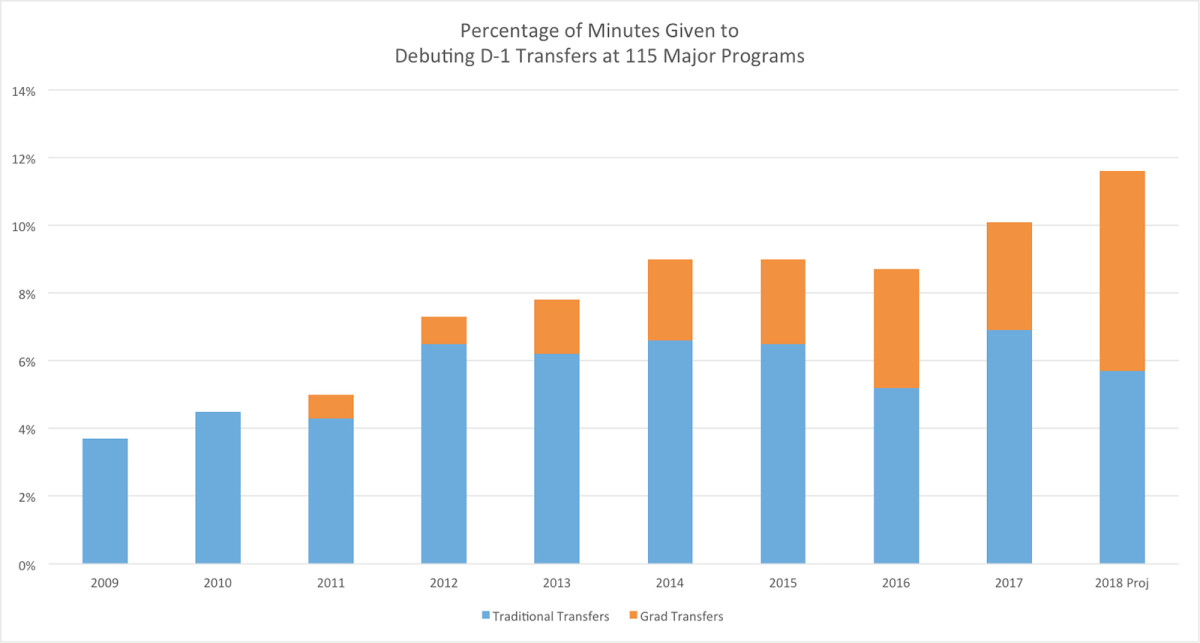
We count 128 players with D-I experience joining these 115 squads this year. While some of these guys put up jaw-dropping scoring numbers at their former schools, others could well struggle to fit into different environments. We suspect that select players—like Dylan Smith (UNC Asheville to Arizona), Dwayne Sutton (UNC Asheville to Louisville), MiKyle McIntosh (Illinois State to Oregon), Ben Carter (UNLV to Michigan State) and Duane Wilson (Marquette to Texas A&M)—will shoulder smaller scoring loads, and it’s possible we’re overrating the impact other players will make. Still, the list of quality faces in new places is long. Here are the 100 we think will score the most on a per-game basis:
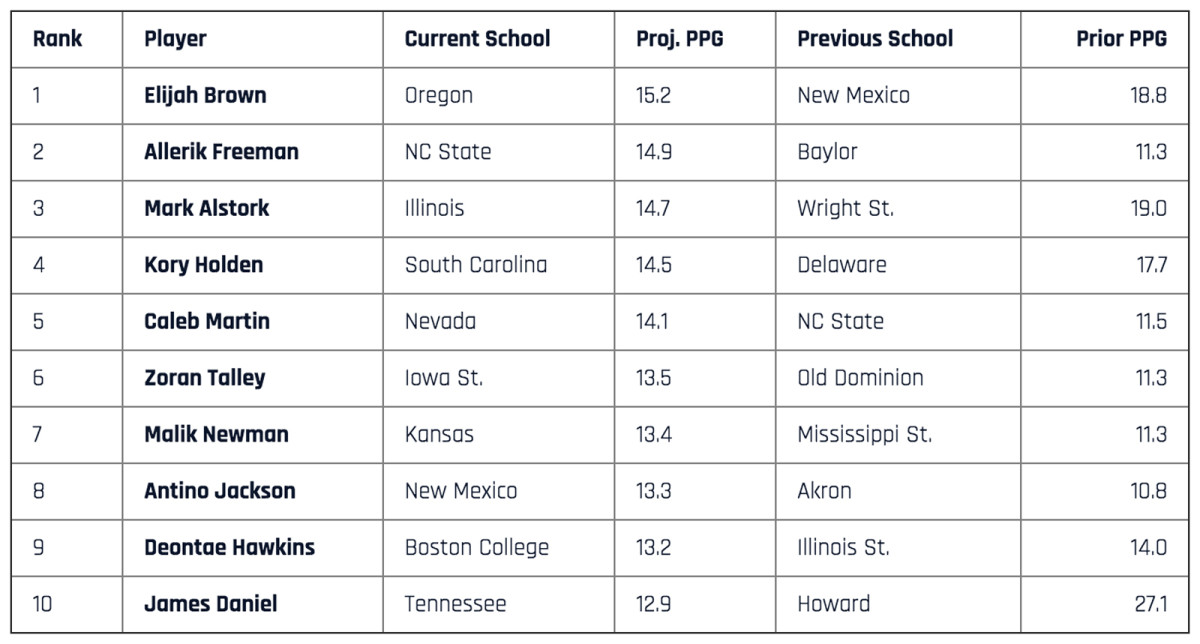
Oregon returns just 19% of its minutes from last year’s Final Four squad, but it would be foolhardy to doubt head coach Dana Altman’s ability to rebuild on the fly. He’s been using the transfer market to churn out quality rosters dating to his time at Creighton, and Elijah Brown (No. 1) is a natural scorer who can fill a big part of the production void left by Dillon Brooks, Tyler Dorsey, Chris Boucher, Jordan Bell and Dylan Ennis. South Carolina also is facing a major rebuild, and with a potential breakout player in Rakym Felder not enrolled in school after his second arrest, Kory Holden (No. 4) has a chance to be the Gamecocks’ new floor general. Meanwhile, Malik Newman (No. 7) is a former top-10 recruit who won’t hesitate to let fly in the halfcourt or in transition. He could shine in a high-powered backcourt duo alongside star senior Devonte’ Graham.
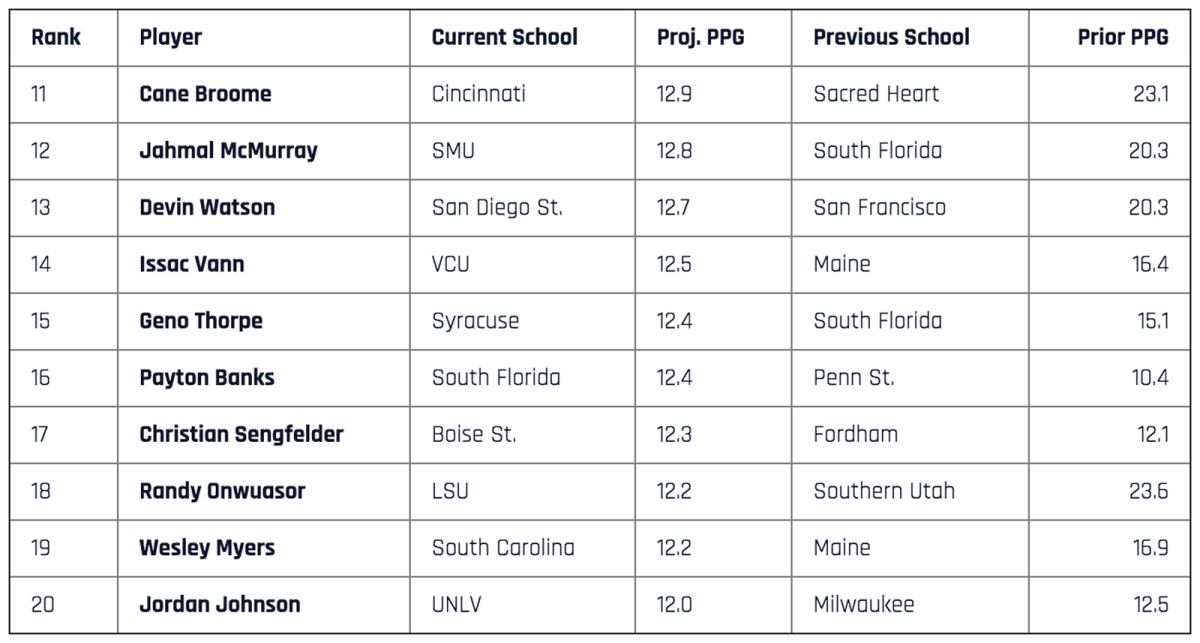
Cane Broome (No. 11) steps into a dream situation in Cincinnati, as he’s surrounded by two great post players in Gary Clark and Kyle Washington, plus two elite finishers in Jarron Cumberland and Jacob Evans. We don’t have high expectations for Syracuse in the ACC this season, but one ray of hope is the arrival of Geno Thorpe (No. 15), who can help make up for the loss of leading scorer Andrew White III as well as former Colorado State transfer guard John Gillon. At UNLV, Jordan Johnson (No. 20) could get a steady diet of clean looks at the basket thanks to opponents paying extra defensive attention to elite incoming big man recruit Brandon McCoy.
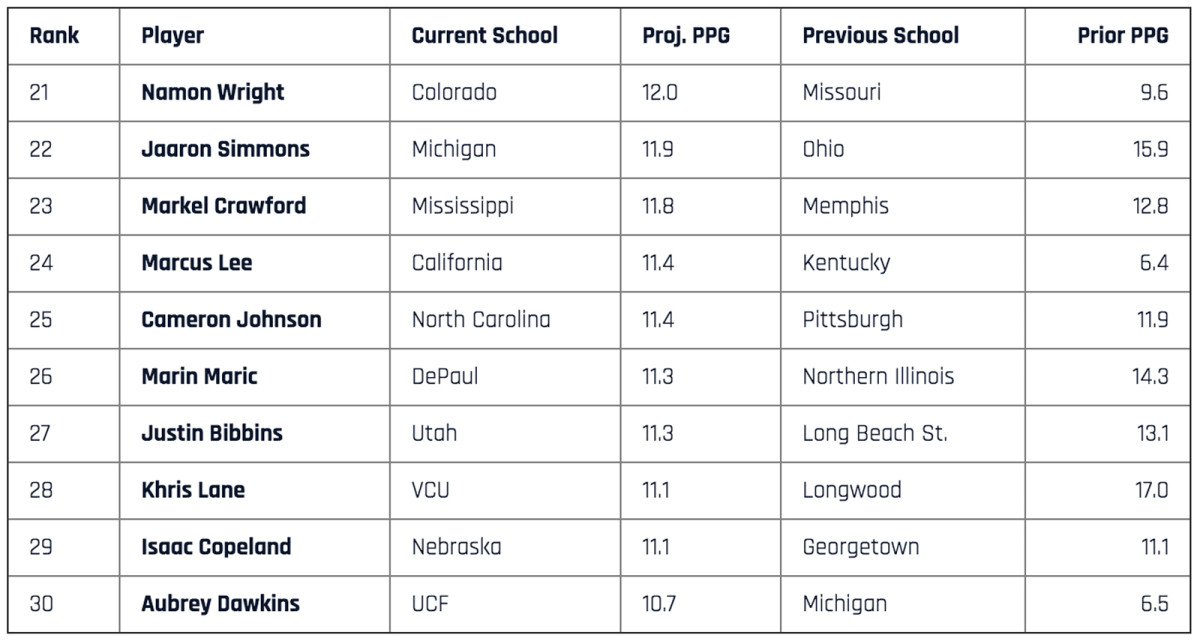
Six players nicknamed the “Grey Squad”—including four transfers, one ineligible player and one injured player—sat out for UCF last season. The return of that cast around 7' 6" center Tacko Fall should make the Knights an NCAA tournament team. SI expects multiple Grey Squad members to make meaningful contributions in 2017–18, but Aubrey Dawkins (No. 30), the son of head coach Johnny Dawkins, may have the biggest impact of the group after making 43.9% of his three-point shots over two seasons at Michigan.
Mississippi’s addition of Markel Crawford (No. 23) gives the Rebels a strong case for having the nation’s most underrated backcourt; SEC foes will have a tough time keeping in check the former top-100 recruit, senior Deandre Burnett and junior Terence Davis. Cameron Johnson (No. 25) brings some needed shooting to North Carolina, but the key question will be whether he has improved the other parts of his game after logging major minutes last season for a Pittsburgh team that could not consistently get stops.
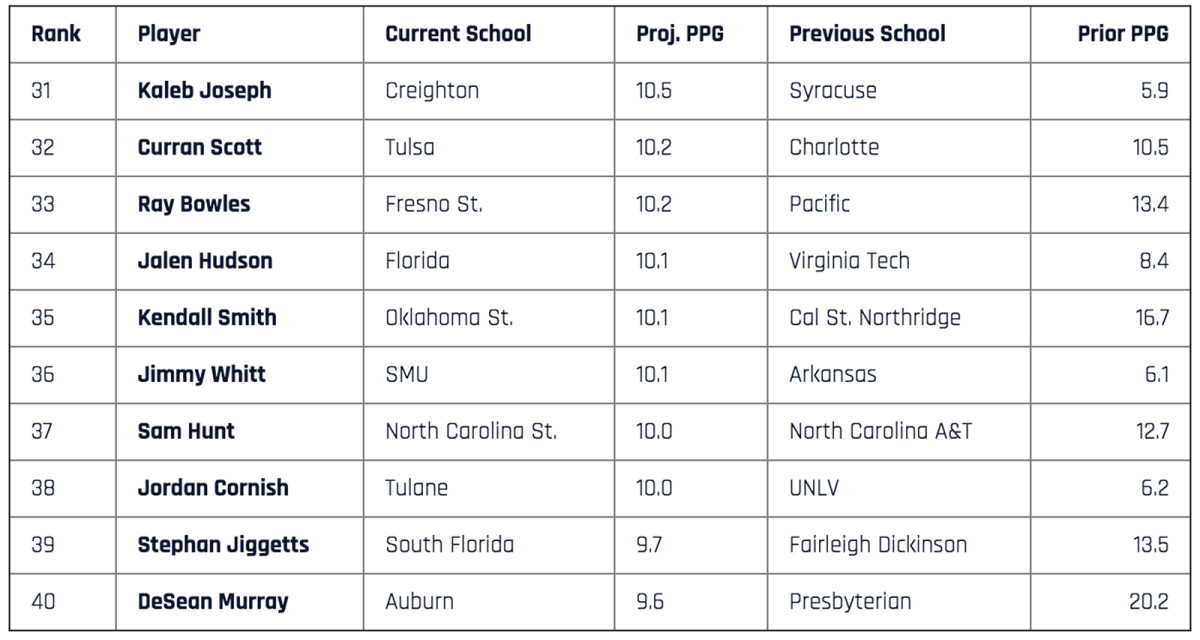
Desean Murray (No. 40) won’t come close to matching his 20.2 points-per-game average at Presbyterian last season against SEC opponents, but he could provide the extra scoring punch Auburn needs to earn its first bid to the NCAAs since 2003.
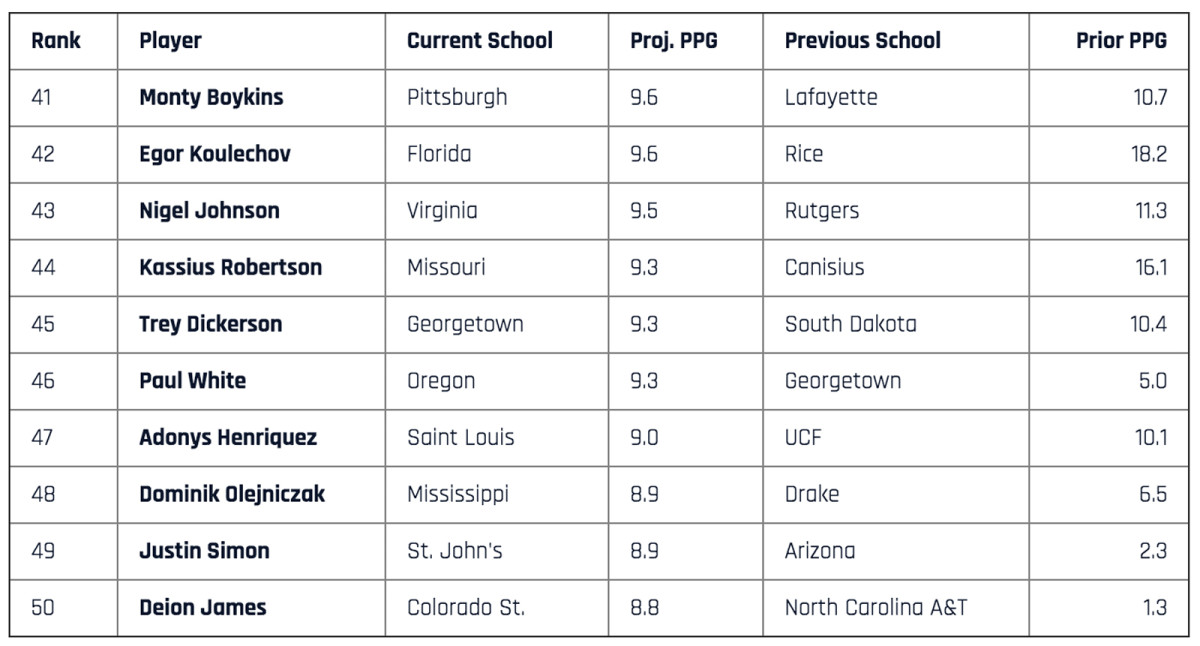
Kassius Robertson (No. 44) is a dangerous long-range shooter, and he’ll need to keep burying treys at a high rate to prevent defenses from loading up against Michael Porter Jr.
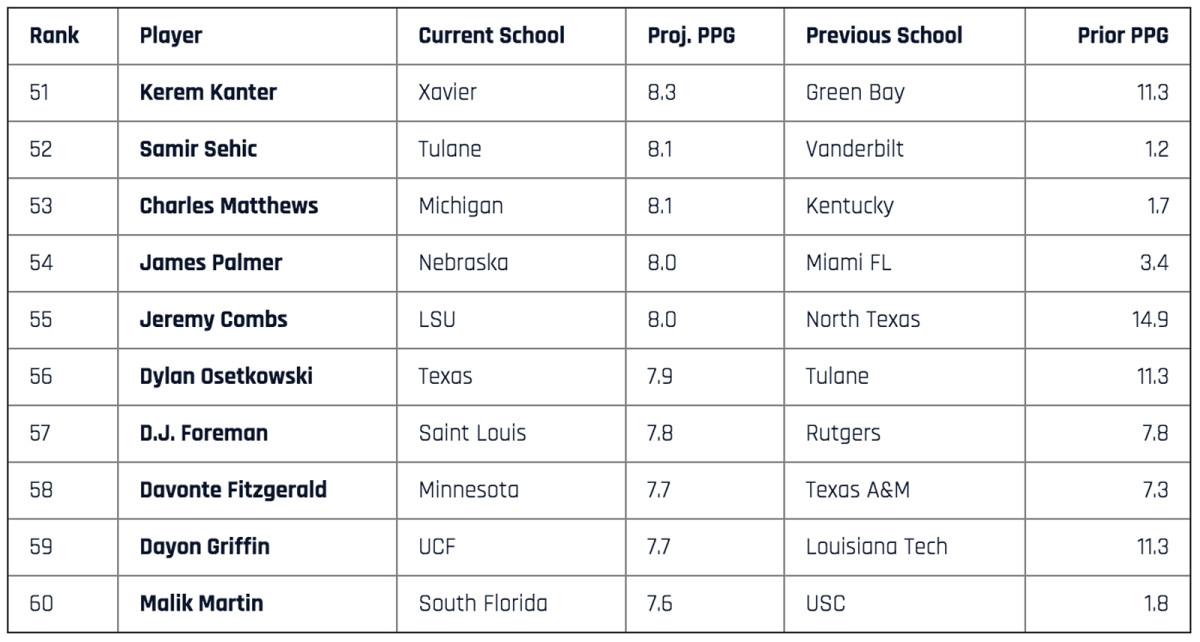
Kerem Kanter (No. 51), the younger brother of New York Knicks center Enes Kanter, is a skilled post player who should benefit from operating alongside Big East Player of the Year candidate Trevon Bluiett at Xavier.
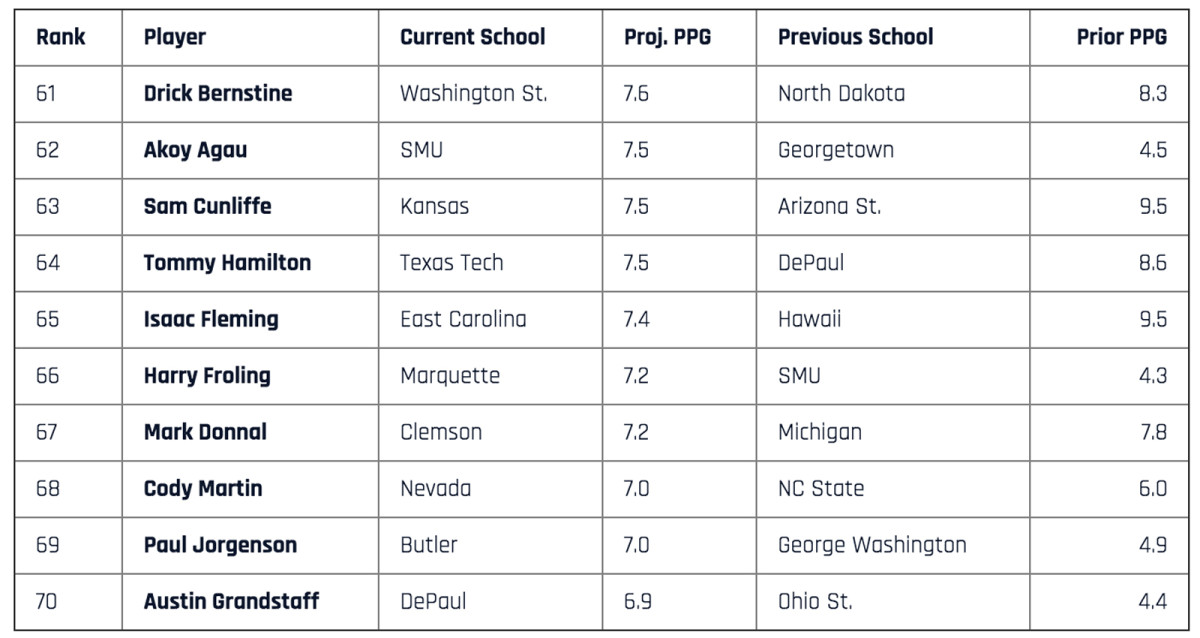
Nevada will be the Mountain West’s Transfer U this season: Cody Martin (No. 68) is one of five players with former D-I experience who we project to have a big impact as a Nevada debutante. The others are Caleb Martin (No. 5), Hallice Cooke (No. 73), Kendall Stephens (No. 86) and Darien Williams (No. 92). This is an almost entirely different Wolfpack squad than the one that made the tourney last season, but with so many coveted incoming pieces complementing ultra-talented junior Jordan Caroline, our model is pegging Nevada as the Mountain West favorite.
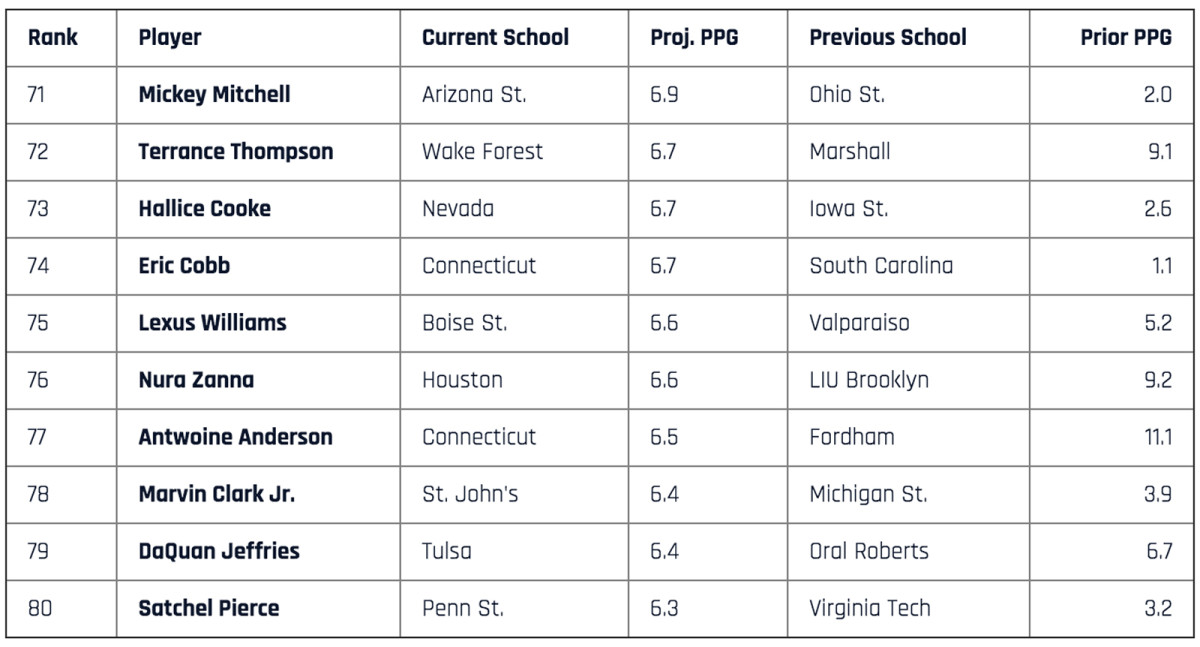
Mike Watkins and Lamar Stevens were two stout defensive presences in the post for Penn State last season, and Satchel Pierce (No. 80) could shore up the Nittany Lions’ depth in the frontcourt. Head coach Pat Chambers would welcome any scoring the Virginia Tech import can provide; Penn State was one of the worst offensive teams in the major conferences last season.
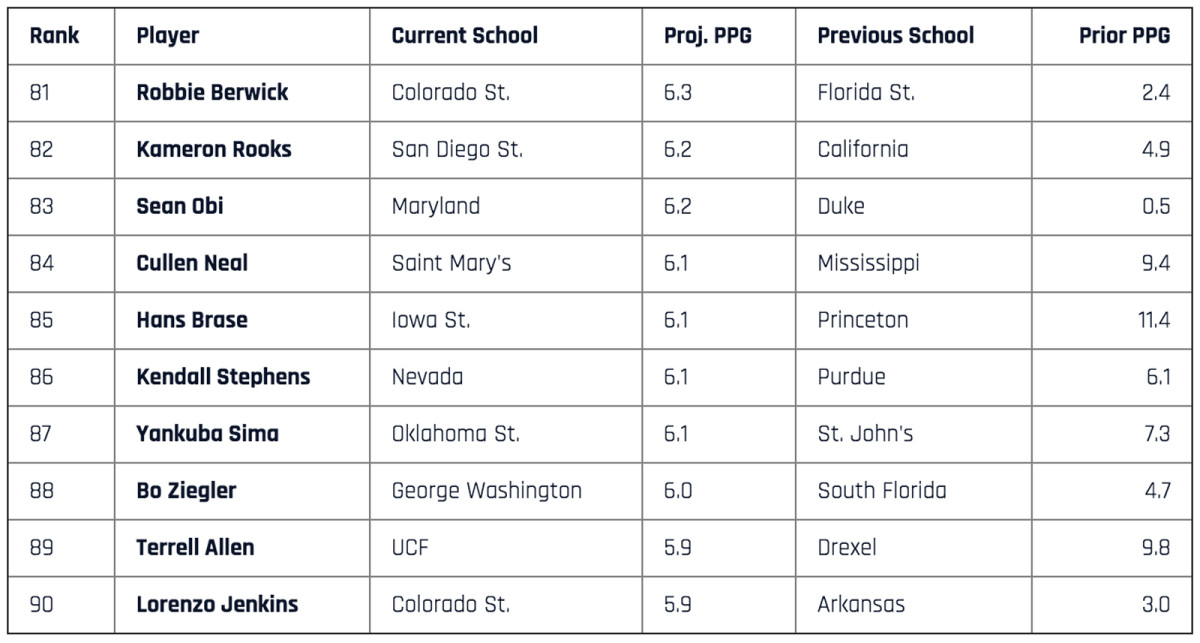
Cullen Neal (No. 84), formerly of New Mexico and Mississippi, has found his third college basketball home at Saint Mary’s. We project him to take on a smaller role with the Gaels, but he should have more team success this season than at his two previous stops.
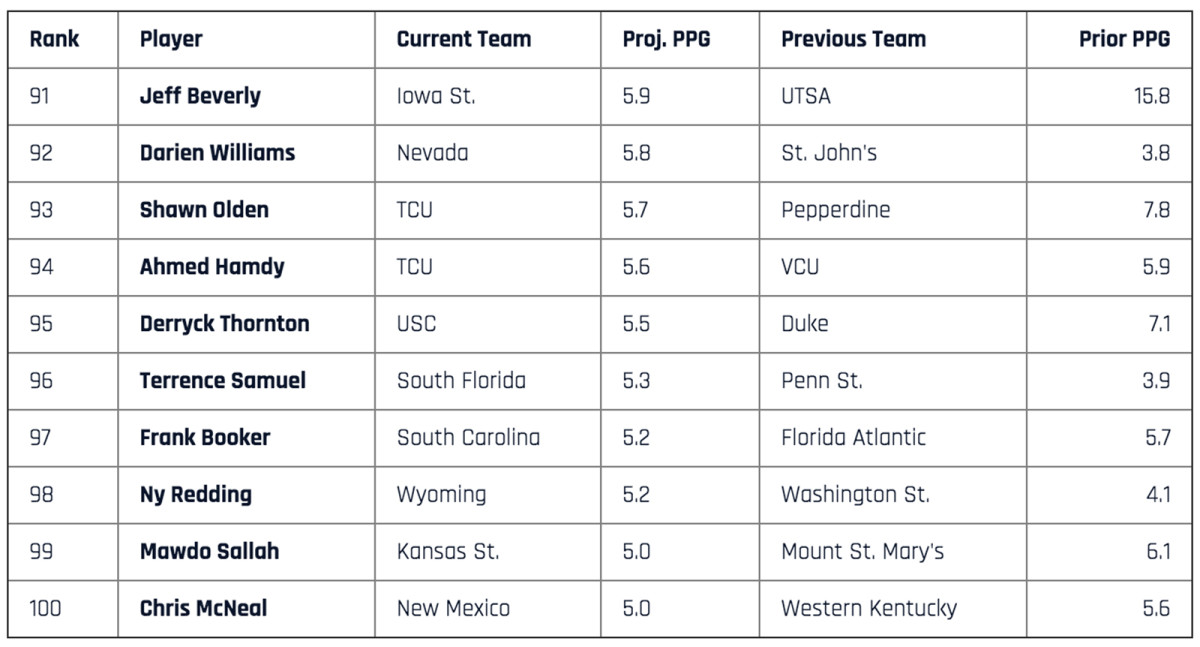
It’s not unreasonable to argue that USC is the deepest team in the country. That depth may be the only thing stopping Derryck Thornton (No. 95), a former top-20 recruit, from breaking out in Los Angeles after a rocky 2015-16 season at Duke. As one of the Trojans’ first guards off the bench, he’ll be a nightmare cover for most second-unit defenders.
